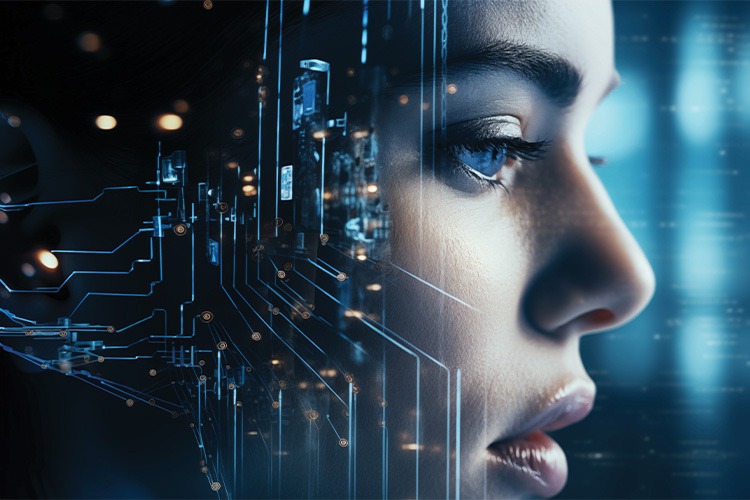Security technology: Trends & Advancements
Cutting-edge physical security technology and tools have had a dramatic impact on the industry. These modern innovations have helped to reduce threats, minimise security risks and ultimately deliver a better overall product to customers.
Innovative technologies can be a critical part of tackling threats. That said, staying abreast of security technology trends and industry evolutions can help with broadening guard coverage. It can also aid in enabling the better detection of threats and reducing response time to incidents.
Artificial Intelligence and the physical security industry
For example, Artificial Intelligence (AI) is garnering a great deal of attention throughout the tech world with researchers estimating that AI tools could drive a $7 trillion increase in GDP and lift productivity growth by 1.5 percentage points over 10 years, according to a Goldman Sachs report. Additionally, many experts believe AI will have a major impact on the security industry.
ChatGPT exploded onto the tech scene about a year and a half ago. Since then, AI has been widely discussed by business owners, researchers and everyone in between. AI is believed to have the power to use computers to simulate human intelligence to perform tasks related to visual perception, speech recognition, decision-making and language translation.
Specific to the physical security market, the impact of AI-based applications is expected to be much more significant.
These tools can analyse massive amounts of data far faster than their human counterparts and alert guards sooner, resulting in the ability to respond to threats much quicker. Coupled with video feeds, these tools have the ability to ‘read’ human behaviour, and potentially identify a crime before it occurs.
Based on the speed at which AI-based applications are evolving, security professionals will want to keep a close eye on new technologies and applications that can have a significant impact on the physical security market.
Security monitoring using drones
To improve overall security, contractors across the globe are increasingly adopting drones to improve safety, drive efficiency and gather data. Forecasts predict that the global drone market is expected to expand at a compound annual growth rate of 25%.
The upfront costs associated with using drones in the commercial security industry are high. However, proponents argue that the long-term benefits far outweigh the cost. Additionally, a hybrid approach of using drones and actual guards can help with providing better service to clients.
Drone technology requires less labour, in addition to the following benefits:
- Drones can capture aerial footage of a site
- Security firms can cover vast areas in comparison with actual guard
- Drones can secure perimeters and prevent break-ins
- By processing drone footage with AI in real time, drones could automatically identify objects that pose a threat, and alert physical guards to respond.
Big data via dashboards and other tech reports
For security firms, gathering large amounts of data is simply part of the job. That data comes in the form of timekeeping, job costing, scheduling or billing information. Regardless of the source, each resource can provide actionable business insights. For most businesses, those insights help a company operate more efficiently and ultimately make smarter decisions.
Clients find data highly useful in terms of identifying and achieving business success. Because of that fact, they are requesting more information to highlight that key performance indicators (KPIs) are being met. Examples of KPIs include the number of security incidents per site, the percentage of false alarms, the percentage of incidents that require a response and the average time to incident detection and resolution.
To enhance customer satisfaction, security firms can demonstrate their performance against KPIs through engaging, visually compelling dashboards and reports generated by sophisticated security software solutions. Regular sharing of these KPIs with clients, whether monthly or quarterly, keeps them continually informed of the value being delivered.
Biometrics in the security technology
To better track employee attendance and make sure that payroll information stays accurate, more security firms are using biometrics. Biometric time clocks can improve timekeeping and eliminate common forms of time and attendance fraud, which include buddy punching, ghost employees and supervisor fraud.
Biometric technology uses the unique biological characteristics that distinguish people from each other – fingerprints, eyes, voice and facial features – as identifiers. Biometrics enable employees to clock in and out, submit work leave and review their schedule. Best-in-class biometric solutions are accessible via a smartphone or tablet, instead of a tracking kiosk or time clock station.
For security contracts that require remote workers, biometrics can help minimise manual data entries, reduce human error, improve on-site security, streamline shift change and produce more accurate data for payroll. Additionally, biometric solutions can seamlessly integrate with payroll or time and attendance software to minimise the complexity of working with multiple systems.
The future of security technology
Security guard technology is rapidly evolving. Businesses that want to stay competitive must keep track of the variety of different technical trends in security.
Although security technology is making a lot of advances in a short timeframe, security incident reporting software, biometrics and business intelligence solutions are a readily available option for commercial security contractors who wish to accomplish some of the same goals that tech trends are attempting to reach.
These tools can help the industry better investigate incidents, respond more decisively, dramatically reduce time clock fraud, and make more informed business decisions.
Christian Berenger
Director of Growth
TEAM Software by WorkWave.

